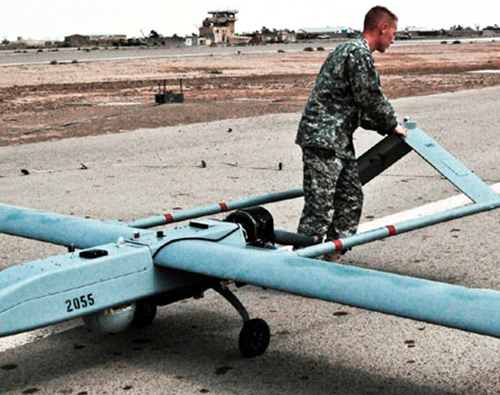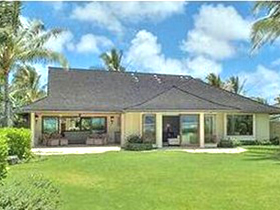

FORWARD OPERATING BASE WARHORSE, BAQUBAH, Iraq -- From the times when Civil War commanders sent intelligence collectors hundreds of feet up and over enemy troops in hot air balloons until today, tactical commanders have relied on eyes other than their own to track enemy movement.
Today, this process is provided by Tactical Unmanned Aerial Vehicles to gather intelligence from a more advantageous position.
“This is a great combat multiplier for operations,” said Col. David R. Hogg, commander of the 2nd Brigade Combat Team at Forward Operating Base Warhorse. “There are no silver bullets in combat, but the UAV paints the picture of what is happening on the ground.”
The Shadow 200 Tactical Unmanned Aerial Vehicle system operated by the soldiers of the 4th Infantry Division provides brigade-level commanders with real-time intelligence of what is happening on the ground - day or night, while being virtually undetectable.
The secret is its ability to fly at extremely high altitudes while using advanced imaging systems capable of seeing from great distances.
“The Shadow normally flies just over a mile high and can go over two miles high,” said Staff Sgt. Marvin O. Ward, a section supervisor for B Company, 104th Military Intelligence Battalion.
Although the Tactical Unmanned Aerial Vehicle may seem like a mere remote controlled model airplane, the Shadow is like no toy. Powering the craft is a Moto Guzzi rotary motorcycle engine burning 87 octane fuel, said Ward, who calls Chicago, Ill. home.
Launched from a hydraulic catapult, which muscles the small aircraft into flight, the aerial vehicle is already traveling 70 knots when it leaves the ground. The aerial vehicle operator then powers the Shadow to the correct altitude and location from a ground control station.
Once over the target, control is then passed from the ground control station on the runway to an operator in the tactical operations center.
The backbone of the aerial vehicle is a camera capable of producing color video in daylight and black and white thermal images at night. This imagery is transmitted back to the commander so he can see what is happening on the ground.
“You get a really good picture,” said Ward. “You can see people moving around from a long way away.”
Through a series of antennae passing information and video between the aircraft and the operators, the Tactical Unmanned Aerial Vehicle crew is able to support conventional combat and raids, perform counter mortar operations and assist with search and rescue operations.



















